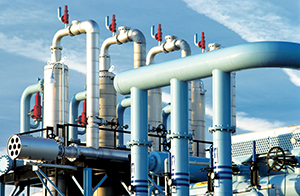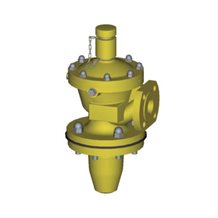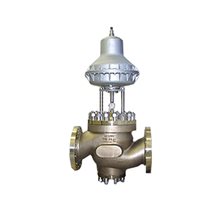A Control Valve controls fluid flow by altering the size of the flow passage from a controller, altering the flow rate and the process quantities such as pressure, temperature, and liquid level. Amongst those available at Curtiss Wright are;
- Feedwater Control Valves for industrial applications,
- 3-Way-Valve with encapsulated super-long bellows and emergency gland or with stuffing box seal
- Oxygen control valves with a straight pattern body suitable for use in steelworks and piping
Control Valves: Purpose & Functionality
A Control Valve alters the flow rate by changing the size of the flow passage from a controller influencing quantities of gas or liquid to having an impact on pressure, temperature, and liquid level.
Depending on the type of valve chosen, the limiting mechanism is moved by an electrical, mechanical, pneumatic, or hydraulic actuator. The valve regulates the flow of movement through a valve plug. The plug is attached to a valve stem, which is connected to the actuator.
Typical Control Valve Usage
Processing plants consist of hundreds of control loops that are networked together in order to produce a certain product. Each loop is designed to control certain variables such as pressure, temperature, flow or level within a required range.
However, each loop receives and internally creates disturbances, affecting the process variable and interaction from other loops within the network, which can have a cumulative effect when multiple loops are connected. In an effort to reduce the disturbances, sensors and transmitters are used to collect information. Controllers then process the information and decide the best way to get the process variable back to where it should be.
Once all of the calculating, comparing and measuring has taken place, a type of control element must then implement the strategy which has been selected by the controller, using the valves to alter pressure within the system, compensating for any noise or disturbances and allowing the system to return to a desired state of pressure, flow or temperature.
Examples Of Control Valves Available
Feedwater Control Valves - Industrial applications for high pressure and temperature service environments such as Power Plants and Petrochemical Plants:
Related Products:








